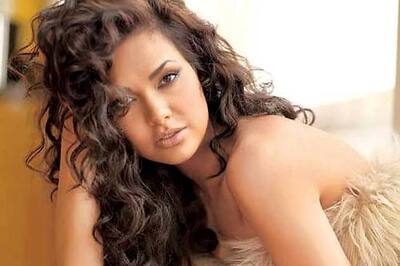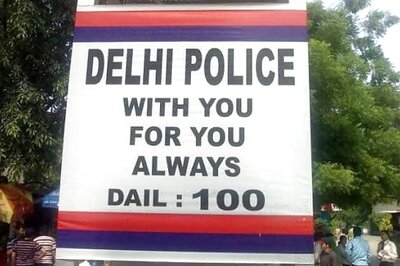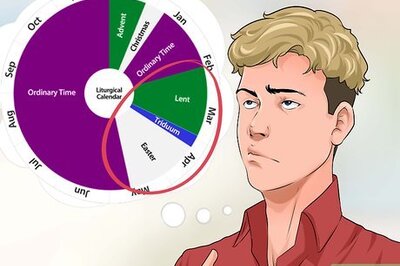
views
New Delhi: Not naming a Chief Ministerial candidate has its own advantages. Congress, for instance, as a matter of faith, never does it. In recent years, Shiela Dikshit, for purely tactical purposes, was a notable exception. Ambiguity at the top keeps all contenders and their supporters interested.
The BJP on the contrary has been a firm believer in giving a tangible face to its election campaigns. The tradition started with Atal Bihari Vajpayee’s projection in 1996. And there have been occasions when the party has impressed upon its allies to project a CM candidate in states where the BJP is the junior partner.
Since its victory in 2014 general elections, the party has, however, been a bit selective in adhering to this principle. Of the states that have gone to polls in the last 30 months — Haryana, Maharashtra, Jharkhand — the leader of the legislative party has been nominated after elections. In all these provinces, anti-BJP forces were up against years of anti-incumbency and lacked a credible narrative.
In states where the opposition had a strong CM contender, not giving a CM face proved counter-productive for the BJP. For instance, in Bihar.
In Delhi, half measures like roping in Kiran Bedi just weeks ahead of the elections to fill in the leadership void failed miserably.
BJP was quick to learn from the Bihar debacle to anoint Sarbananda Sonowal as CM face and win Assam a fair margin.
In Uttar Pradesh — a high stake election — to name or not to name a CM candidate was the critical question which the BJP and its leadership mulled for a while. It all boiled down to two critical parameters.
The first: Did the BJP have a state leader of the stature to match Mayawati and Akhilesh Yadav?
The only name which comes to mind is that of Rajnath Singh. The Union Home Minister is the only former BJP chief minister from Uttar Pradesh who is still in active politics.
But then Rajnath is also the de facto number two in the pecking order after the Prime Minister in the Union Cabinet. Why would he want to go back to Uttar Pradesh at this stage of his political career? And if the BJP were to form a government in UP, wouldn’t the current dispensation want to install a person of their choice in the most politically significant state in the country?
Thus far it seems the party has decided not to project any leader in particular to lead the campaign. This means the BJP would be relying primarily on Prime Minister Narendra Modi for political mobilisation. But if elected to rule, there is no dearth of contenders for the top post if the BJP were to regain power in Uttar Pradesh after 14 years of vanvaas (exile).
That brings us to the second factor: keep everyone happy and interested, and present a bouquet of core caste combination the party seeks to mobilise. Going by that logic, a few other names in the reckoning could be Manoj Sinha and Keshav Maurya.
Manoj Sinha, the Union Telecom Minister and MP from Ghazipur in Poorvanchal, is considered close to BJP president Amit Shah. Sinha, a student leader from Banaras Hindu University, is from the upper caste, not a numerically dominant community. However, caste neutrality can at times be an asset.
Keshav Maurya, the state BJP president, is an MP from Phulpur near Allahabad with a VHP background. He symbolises the BJP’s attempts to mobilise non-Yadav OBC voters, especially the most-backward communities that have traditionally nestled around Mayawati’s BSP. Maurya, however, lacks administrative experience.
Of the remaining state leaders, Uma Bharti and Kalraj Mishra are the only ones apart from Rajnath and Maurya whose pictures dot the hoardings put up by the party across the state.
Bharti, the mercurial sanyasin and the former Madhya Pradesh CM has had to shift base to Uttar Pradesh after a protracted tussle with current MP Chief Minister Shivraj Singh Chouhan. Her heart, they say, is still in Madhya Pradesh.
Kalraj Mishra, on the other hand, has legislative and executive experience both in Lucknow and Delhi. The Brahmin leader from Deoria is currently the only above-75 minister in the Union council.
If Kalraj is well past the age bar set by the PM, then other Brahmin leaders in contention could be Mahesh Sharma from western UP. The Noida MP is currently the Culture Minister in the Union council.
And last but not the least is the fiery Gorakhpur MP Mahant Adityanath. The head of the Gorakhnath Temple was also considered as the CM face. A section of the local RSS leadership backed the move. But caste configurations, especially in eastern UP, forced the BJP to abandon the idea and instead approach the elections under a collective state leadership.
















Comments
0 comment